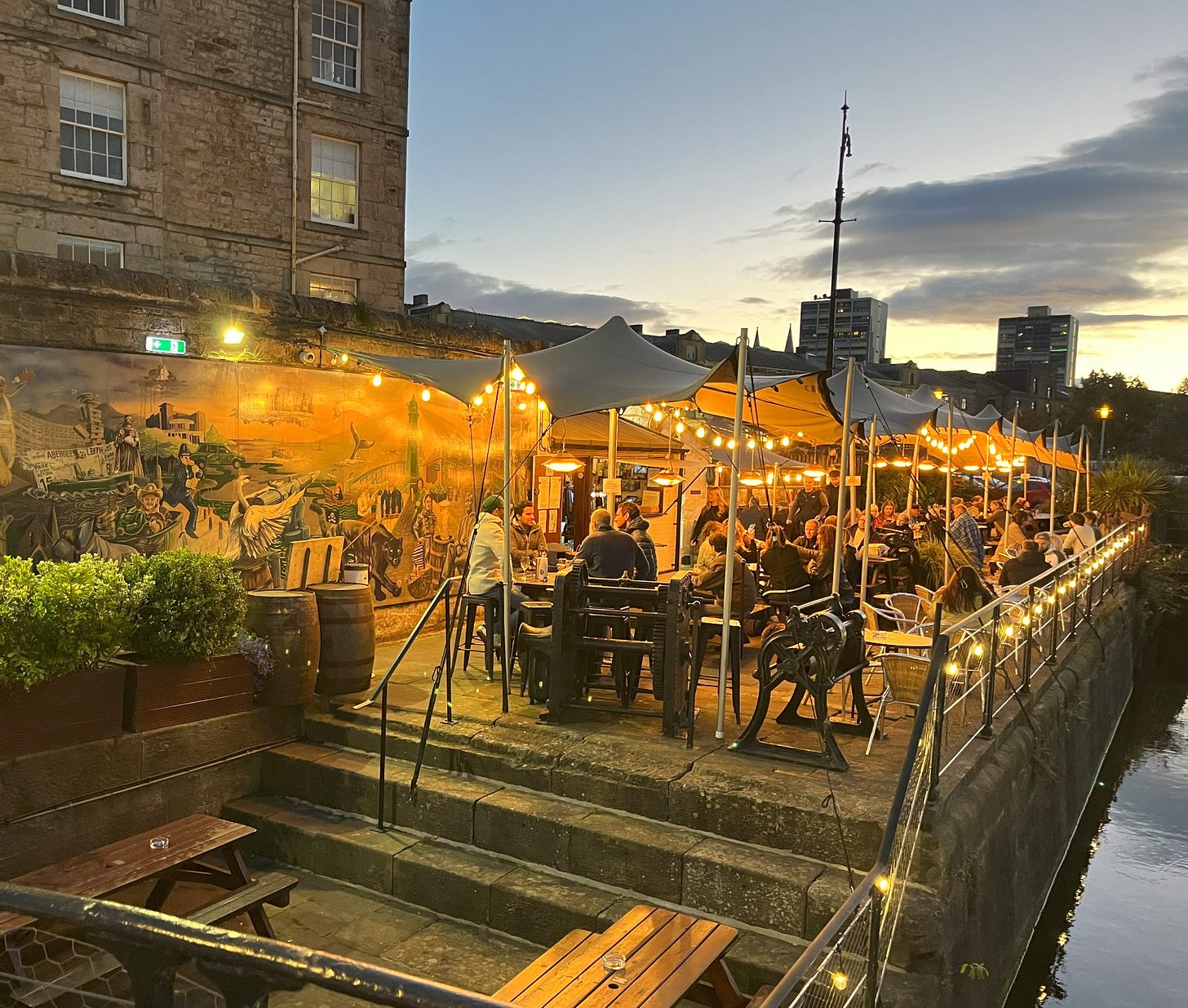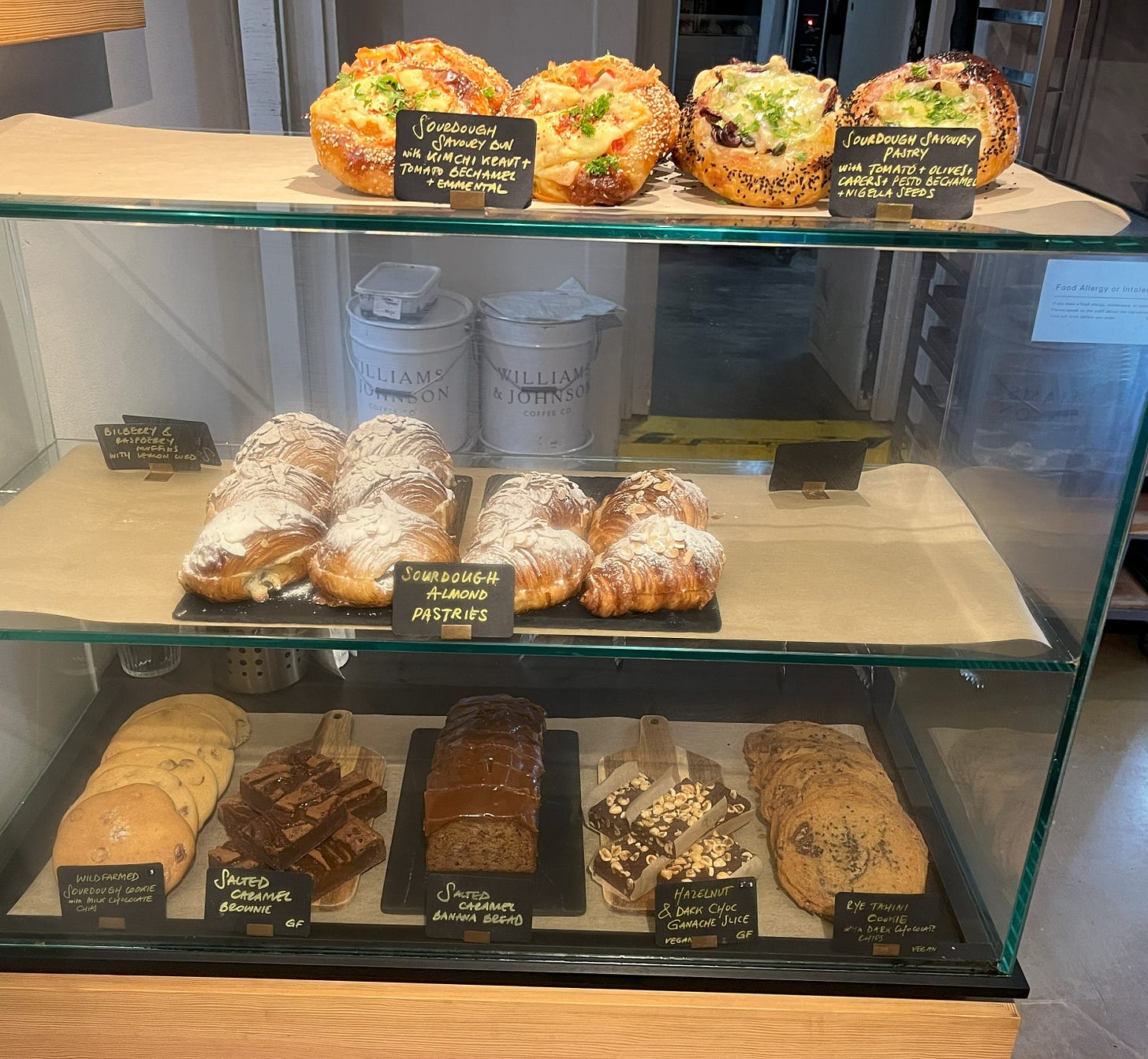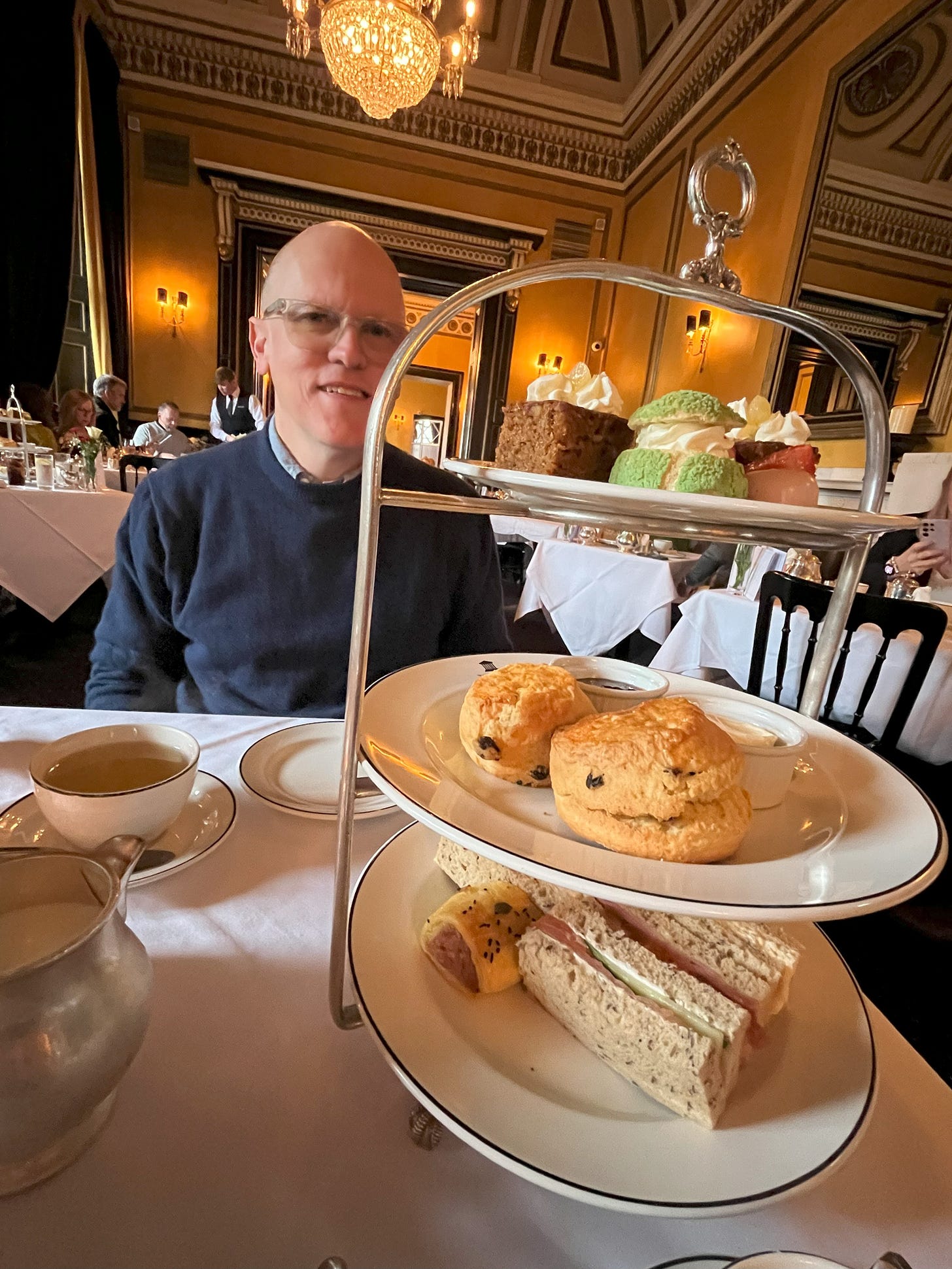Princes Street Gardens, Edinburgh
About a month ago, we returned from a trip to Edinburgh, Scotland. It was our first trip to a European country outside of Spain since we arrived in Barcelona last November (if you don’t count our arrival from the US to Frankfurt, Germany). We had a fantastic time visiting with our sister-in-law, Alex, and her family. She recently moved there from Austin, Texas and we sorely needed to catch up.
It was my first time in Scotland and my third time in Great Britain. Despite the rain and chill, Edinburgh proved to be delightful. It’s a compact, ancient city (nearly 900 years old) overflowing with great architecture and culture. It is well-known for its Scottish writers who have called it home, notably Robert Burns, Sir Walter Scott, and Robert Louis Stevenson. Their stories and poetry are known to many throughout the world and found myself more familiar than I realized with their works having studied them at length in high school.
The Writers’ Museum (Paying Homage to Burns, Scott, and Stevenson)
Not to be forgotten is the tumultuous history of Scotland which continues to shape British and European politics to this day. I also learned that at a certain point in time, events in Scotland and Great Britain coincided with those on the European continent which led to the continuing separatist sentiment that exists currently in Catalonia.
In an interesting parallel, Jacobeans and their supporters fought their right to the British crown throughout much of the early part of the eighteenth century.1 Around the same time, the Bourbons and Hapsburgs fought for control of Spain.2 Great Britain participated in the War of Spanish Succession during which Catalonia ultimately sought its independence. The Catalans threw their support behind the Hapsburgs, who promised them independence and the British in turn backed them.3 Yet, for reasons that might be too involved to get into here, British military assistance was not sufficient to ensure victory for the Catalans independence aspirations. I had to wonder if perhaps their being distracted by their primary concern, which was the battle for the crown between the Scottish Jacobites and the English Protestants, might have lessened their support for the Catalan cause. This might make for an interesting research topic at some future time.
Nonetheless, what does this have to do with culture and cuisine? I will hopefully be getting to that, if not in a more convoluted way than usual. I hope you can all bear with me as we wend our way through ancient Caledonia (known now as Scotland) to Catalunya as it’s called in Catalan.
The urge to pursue a separate national identity from the one to which both Scotland and Catalonia are attached is a forceful one. While it has not led to all-out war in either case and political solutions are still being sought, as difficult as they may be, there is evidence in the much of the social institutions of each place. Both Scotland and Catalonia have national assemblies that are allowed a certain degree of freedom to make laws and set regulations that meet the needs of their people. On the opposite side of the spectrum, both regions support sports teams with a rabid fan base. They both also express pride in their native language and history. These are but a few of the similarities that I observed in my short time in both areas.
Two other areas of similarity that I noted revolved around meals. The social component of food has some of the same aspects as in Barcelona. One in particular on which I’d like to focus is the pubs in Edinburgh and the tapas bars in Barcelona.
As in much of the UK, the local pub can be the seen as the center of community social life. Although there has been much said about the demise of the neighborhood pub, from what I’ve seen in Edinburgh, they seem alive and well. My memories of most pubs, especially during my first visit to Britain as a student, were a place where you could always feel welcome. While the food was a comforting and the drinks were basic, it didn’t matter; it was a place of belonging. Les and I still found that atmosphere to be mostly the same. The staff seemed more polished and less garrulous, the food more gourmet, and the drinks global in nature rather than the usual ales and stouts but reassuring, nonetheless.
In previous essays, I’ve mentioned the near-ubiquitous tapas bars throughout Barcelona. As with Edinburgh’s pubs, they are a hub of neighborhood activity and socializing in many neighborhoods throughout the city. It’s sort of like the old television series, “Cheers” where everyone knows your name. Les and I frequent El Nou Xatico next to our apartment building. We know the owners and always get treated like family members. We frequently recognize many of our neighbors among the patrons. Although our language skills are not yet developed to have an in-depth conversation with any of them, we can exchange a few pleasantries during our lunch or dinner.
We’ve even discovered that when we visit other restaurants, that same atmosphere exists there as well. Whether it is in our neighborhood or if we’re out and about, the vibe at many tapas places exudes conviviality that draws you to the point where you can’t help but participate in the community feeling. I would say the same goes for the pub atmosphere, too. Walking in the front door puts you at ease, even as a tourist. If you stay long enough, you never know what could transpire while downing an (imperial) pint or two!
The Scene at Teuchters Landing on a Friday Evening
I suppose that you see how Barcelona and Edinburgh are connected thought their related histories (those of Catalonia and Scotland) and the similarities of their social spaces (the tapas bars and the pubs). At this point we can see how the bounty of the sea plays an integral part in the cuisine of both places.
Of course, our trip to Edinburgh would not have been complete without some unique mealtime experiences. This is where I can draw on some of the more salient parallels with Barcelona. When most people think of British food, and I guess that would include food in Scotland, the image that is conjured up is one of bland, tasteless, and substantial fare: root vegetables, gravies, chewy red meat, fried fish, heavy creams, and no spices. That was far from our experience in Edinburgh. We found that many restaurants were adept with creating some exceptional dishes that met or surpassed those we’ve had in Barcelona. Although in the past, I have critiqued some of the dishes we’ve had in Barcelona as lacking piquant spiciness, it did show up in unexpected places in Edinburgh such as sausage rolls and fusion courses at Mirin. We also came across many dishes that packed a lot of flavor from herbs and spices that we don’t often see in Barcelona. For example, tarragon and cardamom seemed to be quite popular.
The commonality of both Edinburgh and Barcelona is seafood, and plenty of it! Some of the offerings may vary from place to place but there’s enough to make anyone feel at home. The foreboding and tempestuous North Sea that spans Scotland and Norway, while deadly, provides a bounteous marine harvest: salmon, sea trout, and haddock. Also plentiful are oysters, mussels, and shrimp. The Mediterranean, the ancient lifeblood for some of the earliest civilizations continues to supply the people of Barcelona with a wide variety of seafood. Branzino, tuna, and swordfish join octopus, sardines, and anchovies in the markets and the restaurant tables. There is also some crossover as we noticed, langostinos, razor clams, and cod in restaurants in both places.
While seafood may be the most shared, there are other products that stand out in both Barcelona and Edinburgh. Cheese and pork products for example are ubiquitous at most every meal, especially at lunchtime. Baked goods, particularly pastries, figure prominently at breakfast and the dessert table.
Breakfast Pastries at Williams and Johnson Coffee Co.
Coffee, too, is ingrained into the urban culture in both cities, even though one might figure that tea is more common in Edinburgh (although there were more than a few places where we could enjoy teatime in the traditional British manner).
Les Surveying Teatime Treats at the Dome
Our trip to Edinburgh helped shed some new light on our living experience here in Barcelona. While I recognize that Barcelona does not exist in a vacuum, it is apparent that historical, cultural and natural events have formed this city to make it what it is today. The information age has brought some of this to the fore but much of this can be traced back through the centuries and I think is worth exploring in more detail.
Greyfriars Bobby Hopes to See You in Edinburgh Soon! 4
Works Cited
1 “Jacobite Risings.” National Army Museum, https://www.nam.ac.uk/explore/jacobites. Accessed 3 Nov. 2024.
2 “War of the Spanish Succession.” National Army Museum, https://www.nam.ac.uk/explore/spanish-succession. Accessed 3 Nov. 2024.
3 Albertí, Santiago. L’onze de setembre. [1. ed.], Albertí, 1964.
4 Legend has it that Greyfriars Bobby, Sky Terrier spent 14 years standing guard of over the grave of his owner John Gray. The dog then died on 14 Jan 1872. Memorial was commissioned by the RSPCA. It is now a well-known tourist site in Edinburgh. There is a similar statue and story in Tokyo at Shibuya Crossing dedicated to a dog named Hachikō.










Great comparison Jim! I'm planning to host a Substack Writers Meetup here in Barcelona at the end of the month, will keep you posted on the details.